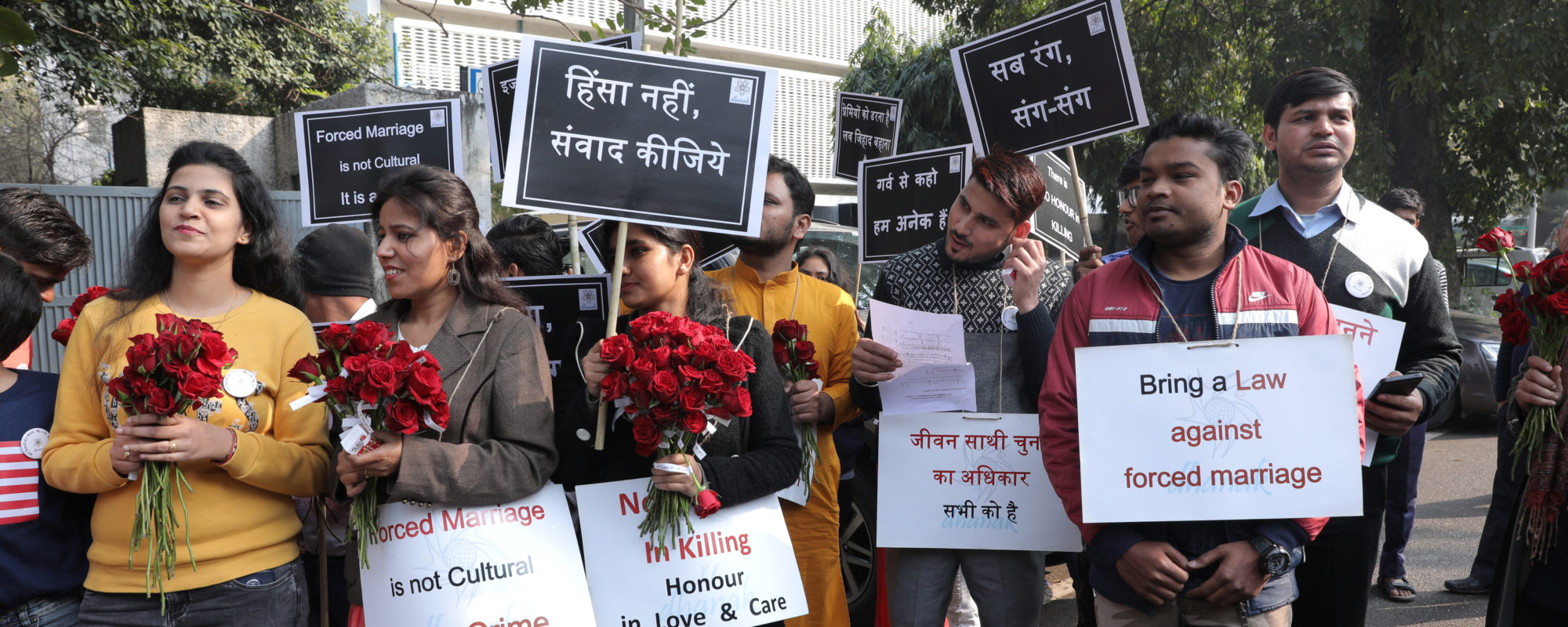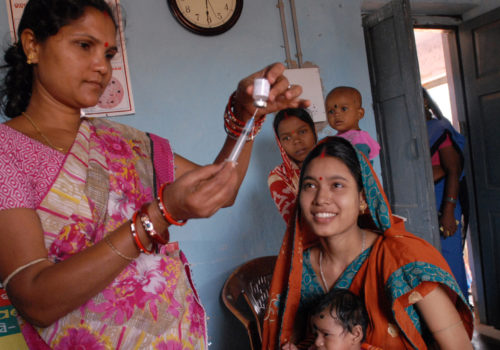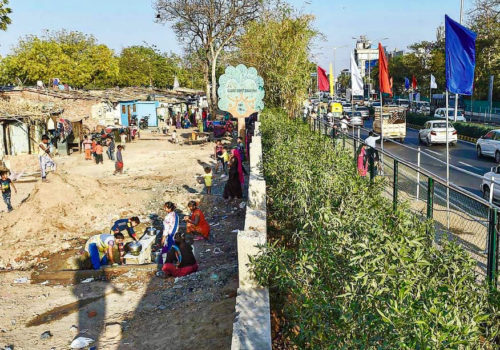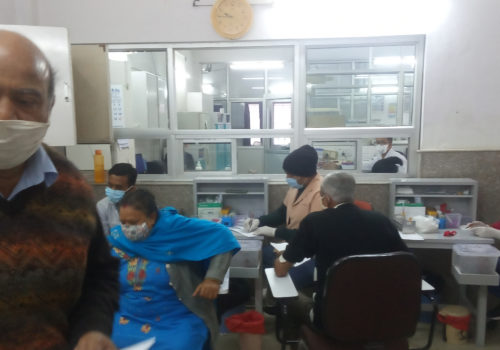NEW DELHI — When Akanksha Sharma went on a Hindu pilgrimage to Mount Trikut in northeastern India, the 31-year-old’s husband accompanied her. Their trip did not go as smoothly as planned. At the five-star hotel they had booked, staff members became visibly uncomfortable when they saw their names on the reservation. From Akanksha’s, they could tell she was Hindu and from her husband’s—Mohammad Abdul Suaib—it was clear he was Muslim. The receptionist demanded their marriage certificate before giving them a room.
Some hotels in India still require couples to be married, but marriage certificates are rarely checked. But because Sharma and Suaib are of different faiths, they constantly have to prove they are not part of a “love jihad.” That’s an idea propagated by conspiracy theorists who accuse Muslim men of luring away Hindu women and forcing them to convert to Islam. Anti-love jihad laws now exist in many states and Prime Minister Narendra Modi’s Bharatiya Janata Party is targeting interfaith couples and seeking to criminalize religious conversion.
But neither Sharma nor Suaib have ever considered converting. Both were raised in conservative households in northern Uttar Pradesh—the country’s most populous state—where marrying outside one’s religion is inconceivable to many. Sharma grew up in the town of Bareilly, where curfews are regularly imposed to prevent clashes between Hindus and Muslims. Suaib grew up in another town 134 miles away, where marrying an outsider is seen as a betrayal of the minority Muslim community.
The couple first met in 2011 in the cafeteria of a telecommunications company in a satellite city of New Delhi where they were both working. Sharma stood out with her petite frame and the thick jet-black hair that ran past her shoulders. She liked Suaib’s square build, spiky coiff and confident yet jovial disposition.
“He was my first Muslim friend,” she told me. For Suaib, it was love at first sight.
As the romance blossomed over the next two years, the couple grappled with how they could stay together. “Before you convince anyone else, you have to convince yourself,” Sharma said.
Secularism and religious diversity are enshrined in India’s constitution, but interfaith unions are still considered taboo, segregating society.
* * *
Shortly after Indian independence in 1954, lawmakers passed the Special Marriage Act, a law that allows mutually consensual marriage between adults from different faiths without requiring religious conversion. The act’s purpose was as much to protect the rights of both spouses as to facilitate marriages.
Sharma and Suaib had never heard of the law until they reached out to Dhanak of Humanity, a non-profit organization that supports interfaith and inter-caste couples. By that point, they had been together two years and each day was becoming harder. Objections from their families were mounting, taking a toll on their health and careers.
Sharma was once ambushed by both sets of parents who tried to convince her the relationship was sinful. They quoted religious texts, and when that failed, they demanded that Suaib convert to Hinduism or Sharma wear a burkha after the wedding.
A volunteer at Dhanak told them they could marry legally and were not required to convert. Suaib said that was the first time he realized what they wanted to do was not a crime.
The procedure is not an easy one, however. It requires a 30-day notice period, with a marriage officer issuing a public notice about couples’ intention to marry. Another provision invites objections from outsiders.
In February, an interfaith couple filed a plea against those provisions in the Delhi High Court. They argued the notice period discourages couples from marrying and impinges on their fundamental rights. Other provisions enable families to exert undue influence by allowing them to object on the grounds of “unsoundness of mind.” The court upheld the provisions. There are no equivalent restrictions on same-faith marriages.
Sharma and Suaib hired a lawyer who was able to stop notices from being sent to their families and married under the act in 2015. The wedding was bittersweet for the couple. “We don’t show our wedding day pictures to anyone because our faces are so swollen from all the crying,” Sharma said. They knew the marriage would change their relationships with their families.
While most Indians say they respect religious diversity, they draw clear lines when it comes to marriage.
When they told their families two days later, they were essentially excommunicated. They did not speak to their parents or siblings for months. Suaib received calls from the police to inquire about the couple’s whereabouts after family members filed complaints. Sharma constantly feared she was being followed. She took different routes on her commute to work to avoid family members she feared would force her to go back home. At one point, Suaib’s parents turned up to his workplace to demand he return home. When his Muslim employer found out that Suaib had married a Hindu woman, he fired him on the spot.
Those experiences changed the direction of their lives. “We wanted to work for this cause so that other couples would not have to go through the struggle we went through,” Suaib said.
* * *
Attempts to discourage interfaith relationships between Hindus and Muslims have a long history in India. During the 19th century, Muslim rulers were depicted in folklore as manipulators who lured Hindu women away from their faith. Later, when India was under British rule, the Hindu revivalist movement Arya Samaj led a popular campaign known as shuddhi. It portrayed Hindu women as hapless victims to the ruses of Muslim men, according to the historian Charu Gupta.
Ten years ago, when the Bharatiya Janata Party began to rise in popularity, it did so on the back of a conspiracy theory about Muslims trying to outbreed Hindus and take over the country. In 2009, a group called the Hindu Janajagruti Samiti in the southern state of Karnataka claimed that 30,000 young women had been duped by “love Romeos.” That same year, the state’s High Court held that a case involving a 23-year-old woman who had converted to Islam to marry a Muslim man had “national ramifications.” It ordered she be “restored” to her parents.
The term love jihad entered the vernacular in May 2017 when a Hindu woman in the neighboring state of Kerala converted to Islam and married a Muslim man. The High Court annulled the marriage on the grounds that the bride’s parents had not given their consent, but the Supreme Court later overturned the decision. A subsequent inquiry into interfaith marriages in Kerala conducted by the National Investigation Agency found no evidence of coercion in any of the cases examined.
Since then, the belief that the state must intervene to stop Muslim men from marrying Hindu women has led to the creation of anti-love jihad laws. In Uttar Pradesh, the state must now approve any religious conversion. Officially, the ordinance is aimed at ensuring conversions aren’t carried out by undue influence, force, coercion or fraud. In reality, it gives the state what the Punjab-based Center for Advanced Studies in Human Rights calls “unfettered power to surveil and question conversions stemming from inter-faith marriage.”
The repercussions have been clear: last December, the state police violently halted a wedding between a Hindu woman and a Muslim man in the city of Lucknow, despite no religious conversions having taken place and their families vocally supporting their union. By mid-January, 85 people had been named in police reports related to the law and 54 had been arrested. Seventy-nine were Muslim men accused of “enticing a woman and forcing her to convert to Islam.” To date, 162 people have been arrested in Uttar Pradesh, although few have been convicted.
Other BJP-led states—Uttarakhand, Madhya Pradesh, Himachal Pradesh and most recently, Gujarat—have passed similar laws, enabling the state police to carry out unencumbered love jihad investigations that can have fatal consequences. Three more states—Karnataka, Assam and Haryana—have announced plans for similar laws.
BJP leaders insist the laws target no specific group and aim only to protect women from being conned into interfaith marriage. But Siddharth Dave, a senior civil lawyer for the Supreme Court, argues that the laws are being used to target young runaway couples when conversion has taken place.
The result is that many interfaith couples who want to get married are left with few options, says Asif Iqbal, a social worker who helped found Dhanak. “Now, the moment you step into an interfaith marriage, there’s a fear it will become criminalized.”
* * *
Sharma and Suaib managed to avoid a grimmer fate by hiring a lawyer and asking for police protection in the first year of their marriage. Sharma’s parents went through a long phase of depression, leaving her younger brother to deal with the fallout at home. “He was very angry about what I had done,” she recalled. But eventually, he got in touch with Sharma to mend their relationship. Suaib’s younger sister was initially upset, but begrudgingly came to accept his decision, he said. However, his parents and brother still refuse to give their support.
In public, the couple is regularly questioned and asked for proof of marriage. “Whenever we write our names together, the person on the other side will always react suspiciously,” Sharma said.
That behavior reflects widespread beliefs. While most Indians say they respect religious diversity, they draw clear lines when it comes to marriage. In a recent survey by the Pew Research Center, 84 percent of respondents said respecting all religions is very important to being truly Indian, and 80 percent believed respecting other religions is a very important part of their religious identity. But 67 percent of Hindu respondents said it was very important to stop Hindu women from marrying into other religious communities, while 80 percent of Muslims said it was very important to stop Muslim women from marrying outside their religion.
Those divisions have severely affected the safety of couples who wed against the will of their families and communities. In 2018, the Supreme Court ordered states to provide safe houses to runaway couples because of the backlash against interfaith marriages. Only a few states have complied, prompting many to flee to bigger cities.
To help deal with all the challenges of interfaith marriage—being isolated from family, uprooting from homes, the threat of unemployment and the emotional void left by the displacement—Dhanak holds annual conferences to foster an environment where couples can talk to each other.
Sharma and Suaib say they hope other couples, especially from small towns who don’t have social circles beyond their immediate families, can see examples of what successful interfaith marriages look like. In the years they’ve been married, Sharma said, they have developed a deeper understanding and respect for each other’s faiths. They celebrate the Hindu festival Diwali and Muslim Eid together, and when they moved into their new home, they held both a Quran khawani and a hawan, religious housewarming rituals. “We participate in each other’s customs and discuss each other’s beliefs, as much as it is possible for each of us,” Sharma said. “There are boundaries, but we respect them.”
* * *
On Sharma’s third wedding anniversary, her parents finally agreed to meet her and Suaib. The preceding days were an emotional rollercoaster for Sharma, but when her parents finally arrived, her father instinctively held her and hugged her tightly and her mother reached for her hand and kissed it.
When she and Suaib now counsel other couples at Dhanak, most hope for the same thing. But government adversity has made that increasingly difficult. Depictions of interfaith relationships in television shows and movies draw the ire of Hindu vigilantes, who have boycotted releases, demanded censorship and protested on the streets in the last few years.
Sharma and Suaib say they hope to disprove those prejudices in their own small way. They are now expecting a baby and say they wish to raise their child as neither Hindu nor Muslim, but share the knowledge, values and customs of both their faiths. When filling out forms asking their child’s religion, they plan to write, “Humanity.”
Photo: A march in support of interfaith marriages in Delhi (Dhanak of Humanity)




